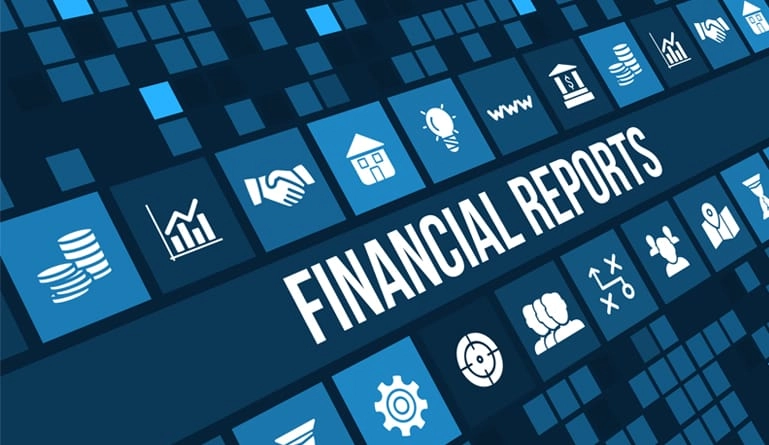In today’s data-driven world, organizations are gathering more information than ever. Whether it’s customer data, operational metrics, or financial reports, the wealth of data at our disposal has the power to transform decision-making and foster innovation.
However, to maximize the value of this data, it’s essential to understand not just what data you have, but also who is using it, how they are using it, and for what specific purposes. This insight is particularly critical when it comes to financial reporting for senior leadership.
In this article, we’ll explore the best practices for effectively determining the users, their methods, and the intentions behind the use of data, with a special focus on financial reporting for senior leadership.
The Importance of Understanding Data Users

Data users can vary widely within an organization, from analysts and managers to senior leadership. Each group has unique needs and expectations for the information they access, making it paramount to cater to those requirements. Moreover, understanding data users enables organizations to:
- Enhance Data Quality: When you know who is using the data, you can tailor data collection, storage, and processing to meet their specific needs. This can lead to improved data quality and accuracy.
- Optimize Resources: Understanding data users helps in efficiently allocating resources. You can ensure that resources are directed towards the most critical areas where data is needed, thereby avoiding wasted effort.
- Improve Data Security: Recognizing the identities of data users is vital for data security. It allows organizations to implement appropriate security measures and access controls to protect sensitive information.
- Drive Data-Driven Decision-Making: Tailoring data for users enhances their ability to make informed decisions, thus fostering a culture of data-driven decision-making throughout the organization.
Methods for Determining Data Users
To determine who is using data, organizations can employ various methods, which can be tailored to their specific needs and circumstances. Some key methods include:
- User Surveys: One of the simplest and most direct methods is to conduct user surveys. These surveys can include questions about who is accessing the data, their roles, and their specific data needs. This method offers valuable insights directly from the users themselves.
- Access Logs and Analytics: Monitoring access logs and data analytics tools can provide a wealth of information about who is using data and how frequently. This method is particularly useful for digital data and online platforms.
- User Interviews: Engaging in one-on-one interviews with key stakeholders, data users, and senior leadership can yield in-depth insights into their data usage patterns, objectives, and concerns.
- Access Control Systems: By implementing robust access control systems, organizations can not only determine who is accessing data but also regulate and restrict access based on roles and responsibilities.
- Data Tracking Tools: The use of data tracking tools and software can provide real-time information on data usage, highlighting user behavior, and patterns.
- Data Governance and Documentation: Maintaining comprehensive data governance practices and documentation can also help in identifying data users. This involves keeping records of data access, usage policies, and related documents.
Understanding How Data is Used

Knowing who is using the data is just one piece of the puzzle. Equally important is understanding how data is being used. This information can help organizations tailor their data provision to suit these methods of utilization, ultimately making data more impactful. Some key practices for understanding how data is used include:
- Data Use Case Analysis: Organizations can conduct a detailed analysis of data use cases. This involves examining real-world scenarios in which data is applied, thereby gaining insight into the practical usage of the information.
- User Feedback and Engagement: Encouraging user feedback and engagement can help in understanding how data is being used. Users can provide valuable input on how data can be more effectively harnessed for their specific purposes.
- Data Usage Analytics: Utilizing analytics tools to monitor data usage patterns can provide detailed insights into how data is consumed. This includes which reports are most frequently accessed, what metrics are used, and how often data is utilized.
- User Training and Workshops: Conducting user training sessions and workshops can facilitate a better understanding of how data is used. These sessions can also serve as a platform for users to share their experiences and requirements.
- In-Depth Interviews: In-depth interviews with data users can delve into the specifics of how they use data in their roles. This can uncover nuances that might be missed through other methods.
Unveiling the Purpose of Data Usage
Determining the purpose behind data usage is as crucial as identifying the users and methods. It provides a deeper understanding of how data contributes to the achievement of organizational goals. Key practices for unveiling the purpose of data usage include:
- Goal Alignment: Ensuring that data usage aligns with the overall goals and objectives of the organization is essential. Identifying areas where data can directly impact strategic objectives is vital.
- KPI Tracking: Monitoring key performance indicators (KPIs) tied to data usage can reveal the purpose behind data access. Are users seeking to improve efficiency, make data-driven decisions, or assess financial performance?
- Regular Feedback: Creating feedback mechanisms for users to communicate the outcomes and impacts of their data usage can help determine the purpose behind data access.
- Benchmarking: Comparing data usage patterns with industry benchmarks and best practices can highlight whether data is being used to its fullest potential or if there are areas for improvement.
- Collaboration and Communication: Fostering collaboration and open communication among data users, analysts, and senior leadership can help clarify the purpose of data usage and ensure that everyone is working towards a common goal.
Financial Reporting for Senior Leadership

Financial reporting for senior leadership is a unique and critical aspect of data usage within an organization. Senior leaders rely on financial reports to make strategic decisions, assess the organization’s financial health, and ensure accountability.
- Tailored Reports: Financial reports for senior leadership should be tailored to address the specific needs and expectations of this group. These reports should focus on high-level financial insights, KPIs, and strategic implications.
- Timeliness: Senior leaders often require real-time or near-real-time data to make timely decisions. Ensuring that financial data is updated promptly is crucial for senior leadership reporting.
- Transparency and Accuracy: Senior leaders rely on financial reports for transparency and accuracy. Data should be presented in a clear and understandable format, and be free from errors or discrepancies.
- Strategic Insights: Financial reports for senior leadership should present data and offer strategic insights and recommendations. This helps senior leaders in making informed decisions that align with the organization’s goals.
- Interactive Dashboards: Providing senior leadership with interactive dashboards can empower them to explore data on their terms and derive deeper insights as needed.
- Data Governance: Strong data governance practices should be in place to ensure data integrity and security in financial reporting. Senior leaders are often dealing with sensitive financial data.
- Collaboration: Collaboration between the finance department and senior leadership is key to ensure that financial reports meet the evolving needs of senior leaders.
Conclusion
Understanding who is using data, how they are using it, and for what purposes is a foundational practice for data-driven organizations. It allows for the optimization of data resources, enhances decision-making, and fosters a culture of transparency and accountability.
When it comes to financial reporting for senior leadership, the stakes are even higher, given the strategic importance of financial data in guiding an organization’s direction. By employing these best practices, organizations can unlock the full potential of their data, ultimately leading to more informed and successful decision-making at all levels of the organization.
Also read: The Reality of AI and How CFOs are Leading the Way

